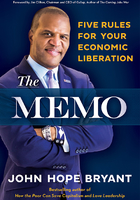Transformation
The Context of Leadership
Transformation is occurring now—not later, not soon, but right this instant. Of course it has always been so, for the history of our species has been an ongoing journey of the evolution of consciousness: the continuous transformation of our essence from one form into a new one. From the moment we branched out from our brothers and sisters who constitute the rest of the animal kingdom—indeed, from the moment before that moment, when animal and plant became distinct entities—transformation has been occurring. To tell the truth, it all began, if it began at all, in that fiery instant of pure energy expanding infinitely across nothingness. And who knows, maybe it never began but always was. Whatever the point of genesis, transformation is not new.
What is new, or at least what strikes us as strange, is the rate of transformation. There clearly have been times when things seemed never to change. Perhaps appearances were deceiving, or we were deceived by our own lack of awareness, but at times it certainly seemed that yesterday, today, and tomorrow were all of a piece. Our deception was probably self-induced. No one and no thing likes to change, for all systems are essentially conservative. So it may well be that we have played the ancient and honorable game of the emperor's new clothes. Everybody knew the emperor was naked, but no one dared say so.
Regardless of how things have been, they are surely different now. And the excitement and terror of the moment lie less in the actual differences than in the speed with which the differences become manifest. We are riding the tiger to somewhere, and we no longer need the pundits and gurus of this world to tell us so. We need only to get out of bed each morning to see what massive change the rolling forces of transformation have brought to us that day.
In the realm of business, as old ways of doing things are placed at risk, an open space is created in which new ways of being in the marketplace come into existence. Some people, however, will find the challenge of the moment more than they can bear and will seek to deal with the future as they have with the past. In organizational terms, this means that when the fit between corporation and environment is less than comfortable, the tried-and-true answer is to restructure and reorganize. Somewhere, somehow, it is assumed, the perfect structure will be discovered. Its shapes may be circles or squares, matrices or hierarchies, but given time and wisdom, not to mention luck, that structure will come forth. And with reorganization comes a host of other efforts to find a comfortable and workable shape: mergers, acquisitions, downsizing, and redirection.
Such organizational efforts at adaptation appear as a crazy dance. Starting with slow, measured steps, they move toward violently oscillating patterns: centralize, decentralize, network, apply authoritarian control, introduce quality circles, get rid of quality circles, encourage employee participation, run it all from the top.
Just when it seems that there is a momentary respite, and “finally, we can get ourselves organized,” some new bolt from the blue crashes through. A corporate raider appears on the horizon. The Middle East erupts in chaos, and oil is shut off. Your only product hits number one on the carcinogen list. The market crashes on the day of your big public offering. The Soviet empire falls apart, peace of a sort breaks out, and all your business is in defense. On days like these the word change hardly seems big enough, and the thought of managing change is almost laughable, as if anybody could manage the forces we experience. Seems like transformation is here to stay.
The Great Organizational Picture Show
The experience of change is not unlike watching an old motion picture that lurches from frame to frame. Things are moving too fast to catch the details in any single frame, but too slowly and erratically to be comfortable with the flow of motion.
Actually, in the “good old days” we didn't have motion pictures at all; rather, a still shot was projected on the screen for what seemed like forever. The details and relationships were frozen, and we grew very comfortable with the sameness. Then some bright, young fellow introduced motion as an added attraction. He placed the old slide projector on rapid advance and we quickly got the idea that motion was involved. Simultaneously, we began to feel jangled and ill, jumping and bouncing from one slide to the next.
THIS IS CHAOS
It is small comfort, but probably useful, to know that the pattern evidenced here is that displayed by any open system caught in the midst of violent environmental disturbance. According to Ilya Pri-gogine, who has spent a lifetime studying such things, the system moves further and further out of equilibrium until it either explodes and dissipates or “pops” to a new level of complexity and competence, from which it can successfully deal with the emergent environmental realities.[1] The system turns “every which way but loose” (to borrow the title of an old Clint Eastwood movie), trying all conceivable tricks in its bag, making adjustments, jury-rigging old procedures, desperately attempting to make sense of a world that has gone crazy. In the end it lies exhausted and either retires from the field of battle or realizes that it is not doing something wrong, it is doing the wrong thing. You simply can't get there from here.
helps us to realize, the difference drives right to the heart of how we understand and work with our organizations. Leadership as command and control is defeated before it ever starts by the chaotic conditions of the times combined with the virtually unthinkable complexity of all living systems. And what you cannot comprehend you cannot predict—which is more than sufficient to drive control freaks crazy.
But the news of chaos and complexity theory is really no news at all. For millennia the great traditions of the world have understood that the forces of chaos and order conspire in a great cosmic dance to bring forth all that is. Shiva dances as creator and destroyer. The Tao manifests in the yin and yang of shadow and light, order and destruction. And according to the prophet Isaiah, God said, “I create light and darkness. I create peace and chaos”[2] (Isaiah 45:7). It would seem that it has always been so; it is only that we may have forgotten, or more likely deluded our- selves. But no matter what the source—contemporary chaos theory, the wisdom of the ages, or your own experience when you roll out of bed to face a new round of transformation—the message is clear: things aren't what they used to be, and all signs point to more of the same—that is, to the different. So what are our alternatives?
GETTING UP TO SPEED
The analogy of the motion picture holds some useful clues. Imagine that we are still sitting in the Great Organizational Picture Show, feeling lurched and bounced. A number of us would like to get our hands on that young fellow and make him go back to showing one picture at a time—slowly. Unfortunately, it turns out that he is hiding in the projection booth with the door locked. More than that, he is positively obsessed with the idea of motion and just won't listen to any suggestions about going slower. Suddenly one of our number has a totally crazy idea. If not slower, how about faster? Contrary to everybody's better judgment, the suggestion is passed under the door, and the diabolical speed freak obliges.
At first it seems that our worst fears are realized. As each frame succeeds its predecessor at dizzying speed, we are about to loose it all in a meaningless blur. Then a most remarkable thing occurs. As our eyes tire and we lose the ability to grasp each frame in its discreteness, we are left with only the flow of the moving image.[3] And voilà—the motion picture is born.
A silly tale with a major point: life in the Great Organizational Picture Show is possible only when you get up to speed, give up on the details, and go with the flow. For us, and for our organizations, the issue and the strategy is much the same. When the forms and structures of our lives pass with such rapidity as to become a blur, it is essential to make sense of the blur.
Making sense of the blur, or getting past the formal structures of our organizations, is made all the more difficult by virtue of the fact that most of us, at least publicly, act as though there were nothing beyond or beneath these forms. When asked to describe our organization, we typically respond by outlining the organizational chart and rendering the balance sheet. After all, these two items, in one form or another, constitute the so-called hard realities of organizational life. We all know that position is power, and that power is money, and both represent the essence of control. After you have dealt with the chart and the balance sheet, what else is there to say? A great deal, it turns out, though most of it doesn't get printed in the business journals.
Position Power and Budget
Take the whole business of position power. Conventional wisdom says that unless you have your name on the chart at a high level, you simply do not have the power to do anything worthwhile. That is what we say. But should we find ourselves off in a private corner, facing the question, How do things really get done around here? it turns out that most people never follow the organizational chart, and some folks seem totally unaware that it exists. And strange to say, it is often the latter group that gets the most innovative things accomplished. Glorified by Tom Peters as the “Skunk Works,”[4] these are the people who have found that it is infinitely easier to ask for forgiveness than for permission. So much for the formal organizational structure.[5]
When it comes to the balance sheet and the so-called hard numbers of the bottom line, the official position is much the same: it is not just the most important thing—it is the only thing. After all, it is something you can count, count on, and control. This said, we just might remember the global stock market meltdown that occurred way back on October 19, 1987. On that day we all discovered that money was only what you thought it was, and we thought it was a lot less on October 20 than we had thought it was on October 18. In the United States, we literally disimagined half a trillion dollars in twenty-four hours. It just went poof. So, although it remains true that balance sheets are important, and certainly something you can count, it is not necessarily true that they can be counted on to reflect value accurately. Something else is involved, which is the activity of the valuer. That is us. When we value things, it is unfortunate but true that our judgment is inevitably subjective. So much for the hard, objective numbers.
It might be said, quite fairly, that I have treated the formal, structural aspects of organizational life with less than due seriousness. But I submit that my treatment of these venerable realities is less severe than the treatment they receive at the hands of the world at large. No comments on my part can possibly place organizational structures in a more tenuous position than the transforming conditions of the world. Like it or not, the organizational chart is definitely in the category of “here today, gone tomorrow.” Likewise with the balance sheet. Obviously every organization needs one, but its hardness and objectivity surely must be suspect in the wake of October 19 and similar events.
The point, however, is not to ridicule these organizational necessities, but rather to place them in perspective. As important as they both may be, there are other elements, or realities, in organizational life of equal or greater importance.
Let us suppose, for the moment, that the official position was wrong and that in fact the back corridor conversations had some substance. Thus, the keys to leadership, power, and organizational effectiveness may not lie exclusively, or maybe even primarily, along the lines of formal position and communication, but rather in that wispy area sometimes referred to as the “informal organization,” the soft side of things. A shocking suggestion, perhaps, and one that many people might rather overlook, if only because it drives directly toward a very sensitive area. The critical issue is control—what is it, and do we really have it? And of course, without control leadership is impossible, at least according to the “old story.”
The informal organization appears unmanageable. It always seems to be beyond our control, and therefore we suppress it, at best, or even totally ignore it. But should it turn out that control, as we have come to understand it, is rather like the emperor's clothes (there only because we desperately wish it to be), then we might want to take another look at the informal system.
Mount Tamalpais
I am reminded of a story about running down Mount Tamalpais,[6] the majestic peak lying just across the Golden Gate Bridge from San Francisco. Its upper slopes are a vast meadowland spilling down to the sea. Given a sunny day and the wind in your face, resisting the call to run down the hill is impossible.
On such a day, a young family picnicked at the top, and when they had finished their meal, the open slopes beckoned. At first they ran in circles, enjoying the grass, each other, and the soft earth beneath their feet. But as they ran their random patterns, they coalesced into a joyful group bounding down the hillside. The wind blew their hair and the steepness of the hillside stripped away all effort. Intoxicated by a feeling of virtual free fall, they cast caution to the winds and raced downward. Feet and legs pumped faster than anybody could remember, and the exhilarating joy was something none of them would ever forget.
Suddenly, a collective thought occurred. Their carefree descent was nothing short of mad. There were rocks in that field, and trees at the bottom. One misstep and delirious joy would quickly turn to tragedy.
The immediate response was to stop, but they were well past the point of no return. To stop at that speed was to court disaster. If stopping was impossible, careful foot placement became a necessity: avoid the rocks and tufts of grass, the gopher holes and other secret hideaways of small animals.
Thoughts of care were right, but also impossible. The speed of descent, to say nothing of eyes filled with wind-born tears, brought vision and thinking to near zero levels. The choice was obvious: there was no choice at all. They were out of control, and any attempt to regain control could only result in disaster.
The story ended happily, for the family made it to the bottom of the field. They had learned a little something about the siren call of Mount Tamalpais; but more than that, they now knew that being in control was letting go.
I suggest that we are all running down Mount Tamalpais. Some of us still think we can stop, or possibly reconfigure the shape of the mountain (create a level playing field). Others are running in absolute terror, sustained only by the hope that the bottom will be reached and the mad flight will come to an end. A few are beginning to suspect that there is no end, and further, that human fulfillment lies not in getting the race over but in running it well.
This latter group contains those strange individuals who had the audacity to propose fixing chaos in the Big Organizational Picture Show with more chaos. Speed up, they said, and they were right. Contrary to the conventional wisdom, and counterintuitive as it might have seemed, sense emerged from nonsense when the discrete bits and pieces disappeared in the blur and meaning emerged in the flow.
Perhaps order and chaos are not opposites but necessary and complementary parts of a continuum, descriptive of the flow of life toward whatever it is about to become. And control is a matter of letting go. Of course, if the leader is always expected to be in control, it is small wonder that leadership is in trouble at the moment. But that is not, as I have said, the only story.
NOTES
[1] Ilya Prigogine, Order Out of Chaos (New York: Bantam Books, 1984).
[2] James Gleich, Chaos: Making a New Science (New York: Viking Penguin, 1987).
[3] Margaret J. Wheatley, Leadership and the New Science: Learning About Organization from an Orderly Universe (San Francisco: Berrett-Koehler, 1994).
[4] Tom Peters, In Search of Excellence: Lessons from America's Best-Run Companies (New York: Warner Books, 1988).
[5] My point is not that structure is not useful but that it is not the only thing, nor the most important thing. Appropriate organizational structure is essential, however. Please see Chapter Nine.
[6] This story is not mine, and if I could remember the teller, I would surely credit him or her. It is one of my favorites.















